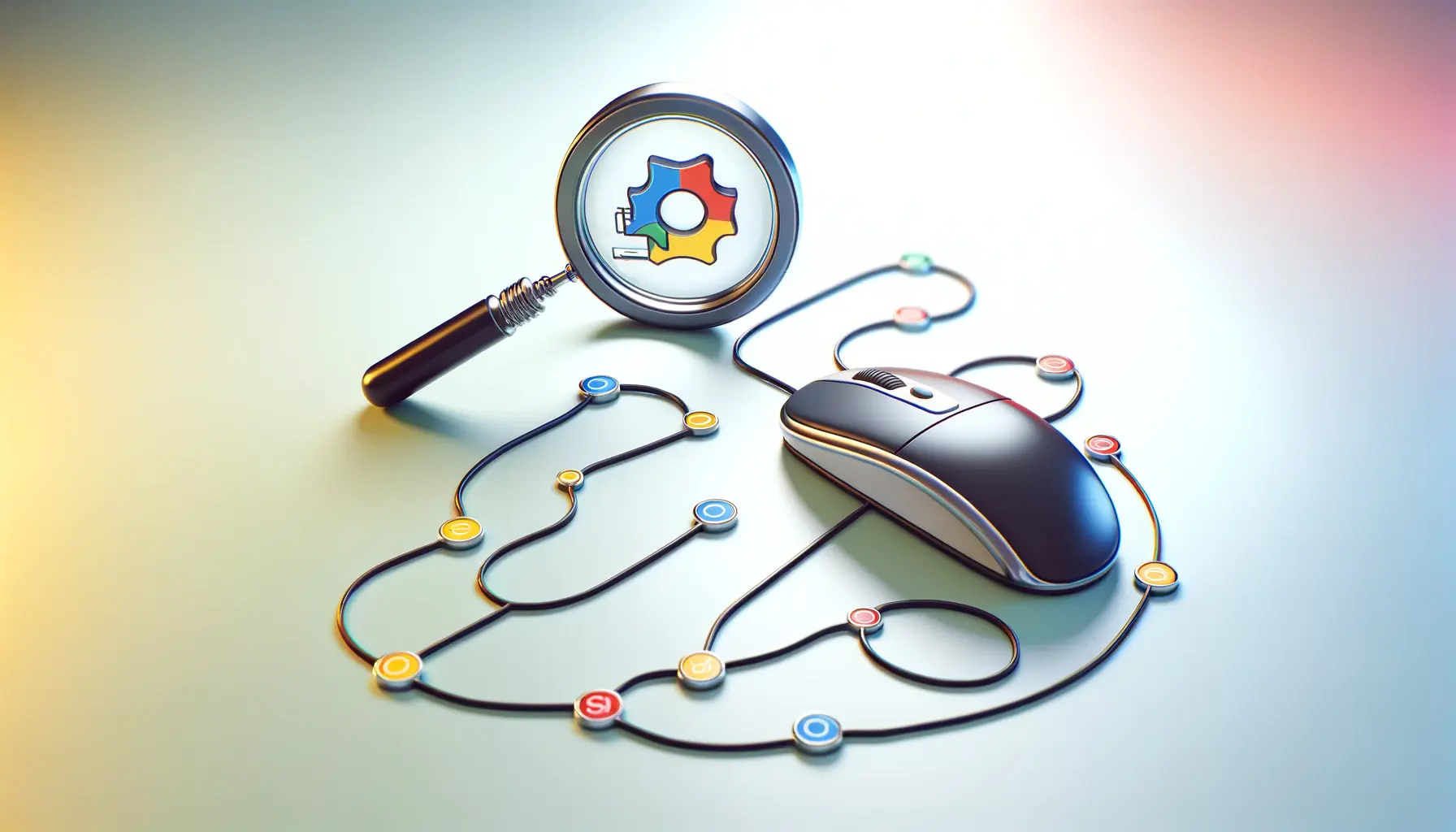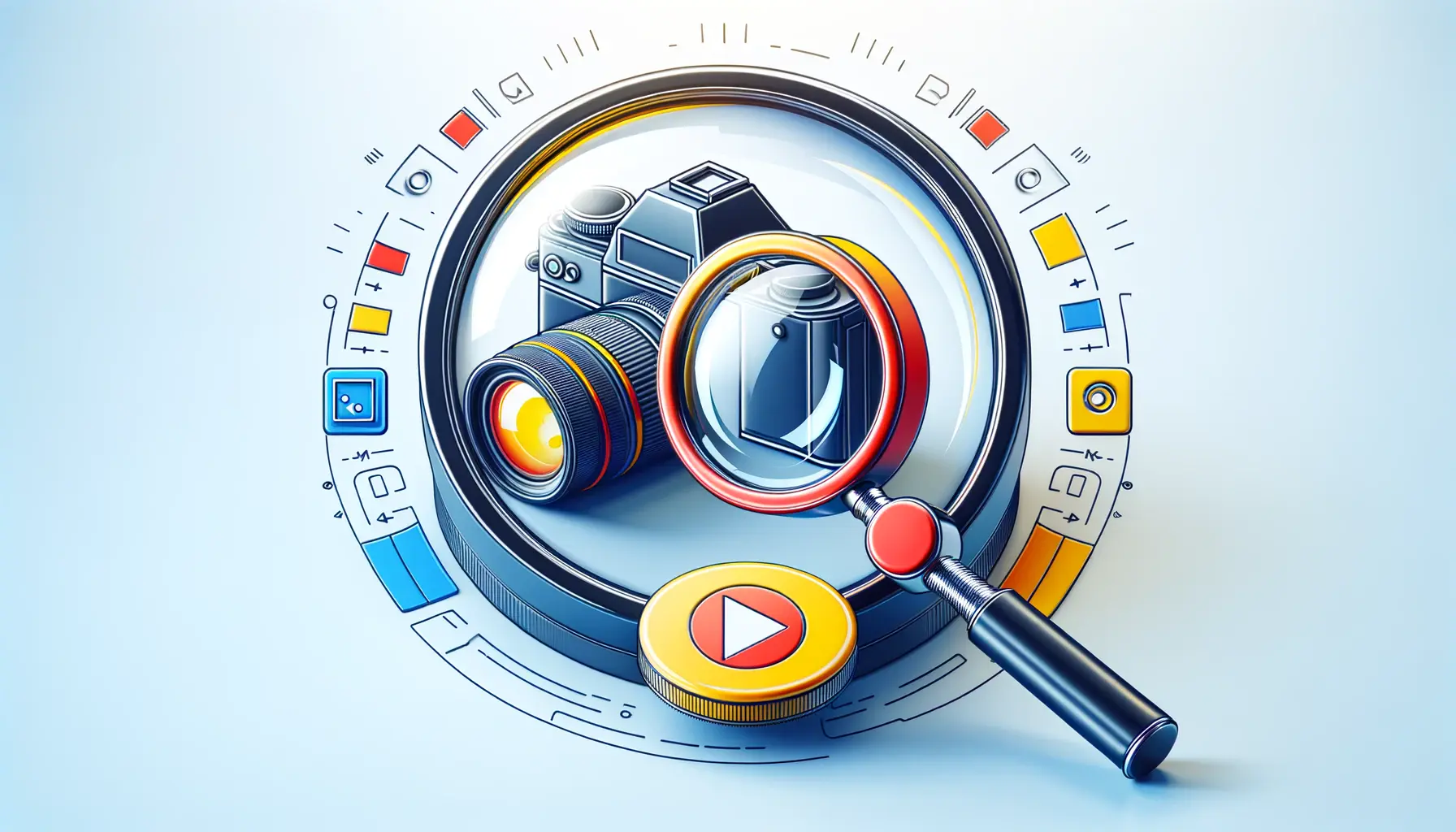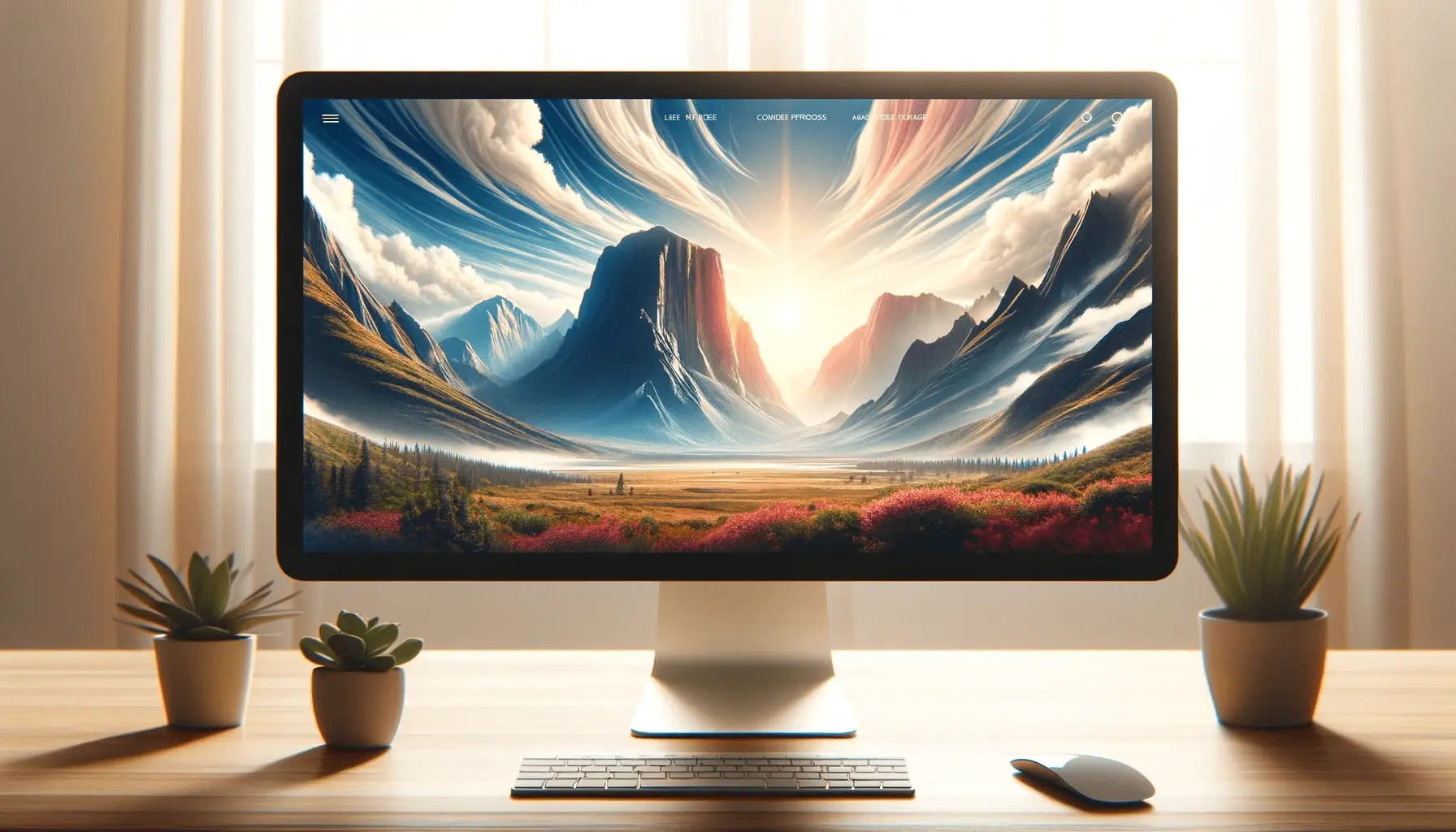In today’s digital age, the power of visual content in SEO cannot be overstated.
With the vast amount of information available online, images serve as a beacon, attracting and engaging users in a way that text alone cannot.
The integration of high-quality, relevant images into your website not only enhances user experience but also significantly boosts your SEO efforts.
This is particularly true in the realm of professional services, where visual content can set you apart from the competition and convey your message more effectively.
Understanding the role of images in SEO involves more than just adding visuals to your web pages.
It’s about strategically optimizing these images to improve your website’s visibility on search engines.
This optimization process includes selecting the right file formats, compressing images for faster loading times, and ensuring images are correctly tagged with relevant keywords.
By doing so, you make your website more attractive not only to users but also to search engine algorithms that prioritize well-optimized content.
- The Importance of Image Optimization
- Effective Compression Techniques
- Strategic Use of Captions and Image Titles
- Integrating Visual Content with Social Media
- Enhancing E-commerce Product Pages with Images
- Advanced Image SEO Techniques
- Monitoring and Analyzing Image SEO Performance
- Maximizing the Impact of Visual Content in SEO
- FAQs on Optimizing Visual Content for SEO
The Importance of Image Optimization
Image optimization is a critical aspect of SEO for professional services.
It’s a process that enhances the visibility and accessibility of your website’s visual content.
Optimizing images helps reduce page load times, an essential factor in user experience and SEO rankings.
A faster website retains visitors, reducing bounce rates and increasing the chances of conversion.
Moreover, optimized images are more likely to appear in search engine results pages (SERPs), driving organic traffic to your site.
Another crucial aspect of image optimization is the use of alt text.
Alt text provides a textual description of an image, allowing search engines to understand the content and context of visuals.
This not only aids in indexing but also improves web accessibility for users who rely on screen readers.
Incorporating relevant keywords into alt text can further enhance your SEO efforts, making your images work double duty in attracting both users and search engines.
Choosing the Right File Format
Selecting the appropriate file format is the first step in image optimization.
JPEG, PNG, and WebP are among the most common formats used on the web.
JPEGs are ideal for photographs due to their balance of quality and file size.
PNGs, on the other hand, are suitable for images requiring transparency or those that don’t compress well as JPEGs.
WebP, a newer format, offers the best of both worlds with high-quality images at smaller file sizes, though its compatibility with all browsers should be considered.
Each format has its advantages and use cases, making it crucial to choose based on the specific needs of your visual content.
For instance, a professional services website might use JPEGs for team photos and PNGs for logos or infographics.
Understanding these nuances ensures that your images are not only visually appealing but also optimized for performance and SEO.
Optimizing images for SEO involves more than just aesthetics; it’s about enhancing your website’s performance and visibility on search engines.
Effective Compression Techniques
Image compression plays a pivotal role in optimizing visual content for SEO.
It involves reducing the file size of your images without significantly compromising their quality.
Effective compression techniques ensure that your website loads quickly, providing a better user experience and positively impacting your SEO rankings.
A slow-loading website can deter visitors, increasing bounce rates and negatively affecting your position in search engine results.
There are several tools and techniques available for compressing images, including online services like TinyPNG or software such as Adobe Photoshop.
These tools analyze your images and reduce their file size by adjusting the compression rate and removing unnecessary metadata.
The key is to strike the perfect balance between file size and image quality, ensuring your visuals remain sharp and engaging while contributing to faster page load times.
Optimizing Images for Mobile Devices
With the increasing use of smartphones to access the internet, optimizing images for mobile devices has become crucial.
Mobile optimization involves resizing images to fit smaller screens and ensuring they load quickly over mobile data connections.
This not only enhances the mobile user experience but also contributes to better mobile SEO, as search engines like Google prioritize mobile-friendly websites in their rankings.
- Responsive Images: Use HTML’s srcset attribute to serve different image sizes based on the screen width, ensuring that mobile users receive images optimized for their devices.
- Adaptive Compression: Adjust the compression level based on the user’s device and connection speed, providing the best possible balance between quality and performance.
Utilizing Alt Text and File Naming Conventions
Alt text and file naming are critical components of image SEO.
Alt text provides a text alternative for images, aiding in accessibility and allowing search engines to better understand and index your visual content.
Incorporating relevant keywords into your alt text can improve your image search rankings and bring more traffic to your site.
- Descriptive Alt Text: Write concise and descriptive alt text for each image, including relevant keywords without keyword stuffing.
- SEO-Friendly File Names: Rename image files using descriptive, keyword-rich names that reflect the content of the image, separating words with hyphens to improve readability for search engines.
Remember, optimizing your images for SEO is not just about improving your website’s aesthetics; it’s about making your site faster, more accessible, and more visible in search engine results.
Strategic Use of Captions and Image Titles
Captions and image titles offer additional opportunities to enhance your SEO strategy.
While they may seem like minor details, they play a significant role in contextualizing images and providing search engines with more information to index.
A well-crafted caption can also improve user engagement by offering insights or drawing attention to specific aspects of the image.
Image titles, on the other hand, are utilized by search engines to understand the subject matter of an image further.
Incorporating relevant keywords into your image titles and captions can boost your visibility in search results.
However, it’s essential to maintain a natural and informative tone, ensuring that these elements add value for users while supporting your SEO objectives.
Creating SEO-Friendly Image Sitemaps
An image sitemap is a powerful tool in your SEO arsenal, allowing search engines to discover all the images hosted on your website.
By submitting an image sitemap to search engines, you ensure that none of your visuals are overlooked during indexing.
This can be particularly beneficial for websites with a large number of images or those that use JavaScript galleries, which can be challenging for search engines to crawl.
- Include Image Metadata: In your sitemap, provide additional details about each image, such as captions, titles, and geolocation, to enhance indexing.
- Update Regularly: Keep your image sitemap updated with new visuals to ensure search engines have the latest information about your site’s content.
Leveraging Image Engagement for SEO
Engagement metrics such as click-through rates (CTRs) and time spent on page can significantly influence your SEO rankings.
Images that capture users’ attention and encourage interaction can improve these metrics, signaling to search engines that your content is valuable and relevant.
Employing high-quality, engaging images throughout your site can lead to better user engagement, higher CTRs, and ultimately, improved SEO performance.
- Interactive Visuals: Use images that invite user interaction, such as infographics that users can explore or product images that offer multiple views.
- Visual Storytelling: Incorporate images that tell a story or convey a message, encouraging users to spend more time engaging with your content.
Incorporating strategic captions, titles, and engaging visuals into your SEO strategy not only enhances your content’s appeal but also drives better search engine performance and user engagement.
Integrating Visual Content with Social Media
Integrating visual content with your social media strategy can amplify your SEO efforts and extend your reach.
Social signals, such as likes, shares, and comments, play a role in how search engines perceive the popularity and relevance of your content.
By creating share-worthy images and distributing them across your social media platforms, you can generate more engagement and drive traffic back to your website.
Moreover, social media platforms offer a unique opportunity to reach a broader audience.
High-quality, engaging images can capture the attention of social media users, encouraging them to explore your content further.
This increased visibility can lead to higher website traffic, improved brand recognition, and, ultimately, better search engine rankings.
Optimizing Images for Social Sharing
To maximize the impact of your images on social media, it’s essential to optimize them for sharing.
This includes using the correct dimensions for each platform, adding social media tags to your website’s images, and ensuring that images are compelling and relevant to your target audience.
- Use Platform-Specific Dimensions: Each social media platform has preferred image sizes. Tailoring your images to fit these dimensions ensures they look their best when shared.
- Add Social Media Tags: Implement Open Graph tags (for Facebook) and Twitter Cards on your website to control how images and content are displayed when shared on these platforms.
- Create Shareable Content: Design images that are likely to be shared, such as infographics, quotable graphics, and visually appealing photographs related to your content.
Tracking Image Performance Across Platforms
Monitoring how your images perform on social media and your website can provide valuable insights into what resonates with your audience.
Use analytics tools to track engagement, shares, and traffic generated from your images.
This data can inform your future content strategy, allowing you to produce more of what your audience loves and improve your SEO results.
- Analyze Engagement Metrics: Look at likes, comments, shares, and other engagement metrics to gauge the popularity of your images.
- Track Referral Traffic: Use tools like Google Analytics to see how much traffic is being driven to your website from social media platforms through your images.
Leveraging the power of visual content on social media not only enhances your brand’s visibility but also supports your SEO strategy by driving engagement and website traffic.
Enhancing E-commerce Product Pages with Images
For e-commerce websites, the quality and optimization of product images directly impact conversion rates and SEO performance.
High-resolution images that accurately represent products can significantly enhance user experience, encouraging longer site visits and increasing the likelihood of purchases.
Moreover, well-optimized product images can improve your website’s visibility in search engine results, driving more organic traffic to your product pages.
Implementing best practices for e-commerce product images involves more than just high-quality visuals; it requires strategic optimization to ensure these images are discoverable by search engines and appealing to potential customers.
This includes using descriptive file names, alt tags filled with relevant keywords, and ensuring images are responsive for mobile users.
Creating a Visual Hierarchy on Product Pages
A well-structured visual hierarchy on your product pages can guide visitors through your content, highlighting key features and benefits of your products.
This involves strategically placing high-quality images to capture attention, supplemented by detailed shots that showcase product features, textures, and usage scenarios.
- Main Product Images: Use high-quality, clear images as the primary visual for each product, ensuring they are well-lit and professionally presented.
- Feature Highlights: Include close-up shots or different angles to highlight specific features or the quality of materials, providing customers with a comprehensive view of the product.
- Lifestyle Images: Incorporate images that show the product in use, helping customers visualize how the product fits into their lives.
Utilizing User-Generated Content
User-generated content (UGC), such as customer photos and reviews, can be a powerful tool for enhancing product pages.
UGC provides social proof, building trust with potential customers by showing that others have purchased and are satisfied with your products.
Additionally, incorporating UGC into your product pages can improve SEO by increasing content freshness and relevance, which are factors considered by search engines.
- Encourage Customer Photos: Invite customers to share their own photos of your products in use, offering incentives for those who do.
- Feature Customer Reviews: Highlight customer reviews and photos on your product pages, ensuring they are easily visible to potential buyers.
Optimizing and strategically presenting images on e-commerce product pages can significantly enhance user experience and SEO, leading to higher engagement, better conversion rates, and increased organic traffic.
Advanced Image SEO Techniques
While basic image optimization is essential for SEO, diving deeper into advanced techniques can further enhance your website’s visibility and performance.
Advanced image SEO involves leveraging the latest technologies and strategies to ensure your visual content is not only user-friendly but also optimized for search engine algorithms.
These techniques can give you a competitive edge, making your website more discoverable and engaging.
From implementing next-generation image formats to exploring AI-driven optimization tools, advanced image SEO techniques are about staying ahead of the curve.
By adopting these strategies, you can significantly improve your website’s load times, user engagement, and ultimately, its position in search engine rankings.
Next-Generation Image Formats
Exploring next-generation image formats such as WebP, AVIF, or JPEG 2000 can significantly reduce file sizes while maintaining high-quality visuals.
These formats offer superior compression algorithms, resulting in faster loading times and improved performance without sacrificing image quality.
Implementing these formats can be particularly beneficial for websites with a large volume of images, such as e-commerce sites or online portfolios.
- WebP: Offers both lossy and lossless compression, supporting transparency and animation, making it a versatile choice for various types of web content.
- AVIF: Provides excellent compression and quality characteristics, even surpassing WebP in some cases, though browser support is still growing.
- JPEG 2000: Delivers high-quality images at lower file sizes, with better handling of gradients and color transitions, ideal for professional photography or art websites.
AI-Driven Image Optimization Tools
Artificial Intelligence (AI) is revolutionizing the way we optimize images for the web.
AI-driven tools can automatically adjust compression levels, resize images based on device requirements, and even enhance image quality without manual intervention.
These tools analyze the content of an image and make optimization decisions in real-time, ensuring the best possible balance between quality and performance.
- Automatic Compression: AI tools can determine the optimal compression level for each image, significantly reducing file sizes without noticeable quality loss.
- Smart Cropping: By understanding the focal points of an image, AI can intelligently crop images to highlight the most important elements, enhancing visual impact and user engagement.
Neglecting advanced image SEO techniques can leave your website lagging behind in search engine rankings and user experience. Embracing these strategies is key to staying competitive in the digital landscape.
Monitoring and Analyzing Image SEO Performance
To ensure the effectiveness of your image SEO strategy, continuous monitoring and analysis are essential.
By tracking how your images perform in search results and understanding their impact on user behavior, you can make informed decisions to refine and improve your approach.
This ongoing process helps identify opportunities for optimization, ensuring your visual content remains a strong asset in your SEO arsenal.
Utilizing tools like Google Analytics and Google Search Console can provide valuable insights into how users interact with your images and how these interactions contribute to your overall SEO goals.
Analyzing this data allows you to adjust your strategy, focusing on what works best for your audience and search engines.
Key Metrics to Track
Understanding which metrics to monitor is crucial for evaluating the success of your image SEO efforts.
These metrics can give you a clear picture of how your images are performing and their impact on your website’s SEO.
- Image Impressions and Clicks: Track how often your images appear in search results and how frequently they are clicked. This data can help assess the visibility and appeal of your images.
- Page Load Times: Monitor how image optimization affects your website’s loading speed, a critical factor for both user experience and SEO rankings.
- User Engagement: Analyze metrics such as bounce rate, time on page, and conversion rates to understand how images influence user behavior and engagement on your site.
Adjusting Your Strategy Based on Insights
Armed with data on your image SEO performance, you can make strategic adjustments to enhance your visual content’s effectiveness.
This might involve experimenting with different image formats, adjusting compression levels, or revising alt texts and captions to better target relevant keywords.
- Optimize for High-Performing Images: Focus on optimizing images that drive the most engagement and conversions, applying lessons learned to other visuals on your site.
- Experiment with New Techniques: Test advanced optimization methods or new image formats to see how they impact your SEO performance and user experience.
Effective image SEO is not a set-it-and-forget-it task. It requires regular monitoring, analysis, and adjustments to stay ahead of search engine algorithms and meet user expectations. By continually refining your image SEO strategy, you can ensure your visual content remains a powerful tool for driving traffic, engagement, and conversions.
Maximizing the Impact of Visual Content in SEO
In the realm of digital marketing, the strategic optimization of images stands as a cornerstone for enhancing SEO performance.
As we’ve explored, images and SEO are intrinsically linked, with visual content playing a pivotal role in attracting, engaging, and retaining website visitors.
The journey from selecting the right file formats and sizes to implementing advanced optimization techniques underscores the multifaceted approach required to leverage images effectively within SEO strategies.
Key Takeaways for Optimizing Visual Content
Through the comprehensive exploration of image optimization, several key strategies have emerged as essential for boosting SEO performance:
- Choosing the correct image formats and compression techniques to enhance page load speed and user experience.
- Implementing responsive design and AI-driven tools to ensure images are optimized for all devices and user contexts.
- Utilizing alt texts, captions, and descriptive file names to improve image discoverability and relevance in search engine results.
- Integrating visual content with social media to amplify reach and engagement, driving traffic back to the website.
- Monitoring and analyzing image performance to continually refine and adjust strategies for maximum impact.
These strategies highlight the importance of a holistic approach to image SEO, where every element of visual content is optimized to contribute to the website’s overall SEO goals.
Future Directions in Image SEO
As search engine algorithms evolve and user preferences shift, the landscape of image SEO will continue to change.
Staying abreast of these developments and adapting strategies accordingly will be crucial for maintaining and enhancing SEO performance.
Innovations in AI and machine learning, along with the adoption of next-generation image formats, promise to offer new opportunities for optimizing visual content in ways that are both user-centric and search engine friendly.
In conclusion, the synergy between images and SEO is undeniable.
By embracing the strategies outlined in this article, businesses and SEO professionals can ensure that their visual content not only captivates and engages users but also significantly contributes to their SEO success.
The journey of optimizing images for SEO is ongoing, requiring continuous learning, experimentation, and adaptation.
However, the rewards in terms of improved search rankings, user engagement, and website performance make it a worthwhile endeavor for any digital marketing strategy.
Want your website to top Google search rankings? Leave the SEO to our professional agency!
FAQs on Optimizing Visual Content for SEO
Explore common questions about enhancing your website’s SEO through effective image optimization.
Image SEO boosts website visibility, enhances user experience, and increases organic traffic by making images discoverable and indexable by search engines.
Choosing the right image format, like JPEG or PNG, affects load times and image quality, directly impacting SEO performance and user engagement.
Use descriptive, keyword-rich file names, separating words with hyphens to improve your images’ SEO and make them more understandable to search engines.
Alt text helps search engines understand the content of an image, improving accessibility and providing a textual alternative that can include relevant keywords.
Yes, compressing images reduces file size, leading to faster page load times, a crucial factor in SEO rankings and enhancing overall user experience.
Responsive images adapt to different screen sizes, improving site speed and user experience on mobile devices, which is vital for mobile SEO.
Captions provide context and additional text for search engines to index, which can include keywords to improve visibility and user understanding.
User-generated content adds authenticity and can increase engagement and social sharing, signaling to search engines the relevance and popularity of your content.












